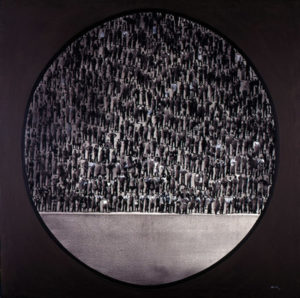Description in the Psychological Sciences
by Jill Morawski
The essay begins:
Whether our work attends to material objects, texts, behavior, or logic, at one point or another we undertake description. Yet such description practices often proceed without reflection or analysis. In my own discipline, psychology, researchers describe behaviors, experimental protocols, data analysis, and results, although they do so with scarce guidance beyond what is offered in a style manual. In recent articles, Heather Love, Stephen Best, and Sharon Marcus have argued against “suspicious interpretation” and advocated practices that seem to reproduce precisely the kind of transparent description that psychology has long taken for granted. Best and Marcus, for example, characterize the contributors to a special issue of Representations, “The Way We Read Now,” as “relatively neutral about their objects of study, which they tend less to evaluate than to describe, and which they situate in landscapes neither utopian nor dystopian.” As David Coombs has observed, such turns to descriptive criticism in literary studies suggest a disciplinary future “in which English has grown much closer to the sciences” by embracing value neutrality and objectivity as epistemic virtues. These moves toward description and away from interpretation and critique might be beneficial to literary studies, but what, if any, are the benefits to the sciences? Prior to this question stands another: what constitutes description in the sciences?
These questions guide this essay, which considers them in terms of one particular science, experimental psychology. Even at the start, there are some ready answers to the first question. Description is and has been crucial to psychology’s empirical practices, yet this aspect of scientific work apparently is so established and routinized that researchers rarely elucidate their methods or demonstrate the kind of “attentiveness” to the details of the observational events that is more regularly valued in the humanities. Under these circumstances, a focus on the practices and epistemology of description could provide guidance by which experimenters might refine, enrich, and possibly extend their description practices. Benefits could accrue also to a related aspect of modern experimental psychology, the quantification ideal, for the rise and triumph of quantification (taking numbers as accurate and sufficient descriptions of psychological events) risks substituting the “truth” of numbers for reports of what is actually happening. Description studies thus have the potential to inform research psychologists’ pervasive translation of psychological phenomena into numerics. Further, although scientific psychology depends on the description of observable events, its technical practices often involve dense inferential reasoning—that is, interpretation. Insofar as literary criticism regularly attends to interpretive practices, psychologists can take heed and consider how literary analyses might guide them toward better ways of interrogating their own scientific habits of inferential reasoning.
At the outset, it is important to recognize some distinctive features of the production and uses of scientific knowledge that are fundamental to psychology’s description practices. Chief among these features are the ideal of reductionism; elaborate techniques and technologies that are deemed requisite to observation, calibration, and the description of objects in the world; the preeminence of quantification over all other forms of description; and valences of material power, social and physical, that differ significantly from the humanities’ powers in effect if not in kind. Historian Theodore (Ted) Porter has analyzed these dimensions of science and isolated two different kinds of description. The first section of the essay reviews his taxonomy of science’s thin and thick description and uses it to outline the forms and contours of description in the psychological sciences, while at the same time acknowledging variations across this heterogeneous field. Porter’s analysis is especially useful in highlighting the scientific descriptions that are disseminated for general use and showing the social and material power realized through them. These “thin” descriptions, as Porter names them, figure centrally in scientific psychology, a science founded in the late nineteenth century with an explicit goal of improving the human condition. This aspirational goal has been sustained for more than a century and is exemplified in the now iconic slogan “giving psychology away” (in the sense of making it available for human benefit). The expression was coined by George Miller, one of the acclaimed fathers of cognitive psychology, whose 1969 presidential address to the American Psychological Association (APA) urged psychologists to give psychology away “as a means of promoting human welfare.” The second section of the essay centers on this “responsibility” to give psychological knowledge away for people to use by examining the modes of description employed in what is arguably the most famous experiment in twentieth-century psychology, Stanley Milgram’s series of behavioral studies of obedience. Reported in 1963, Milgram’s experiments continue to be regarded as the preeminent account of human tendencies to obey authority today. Examination of the relevant publications and archival materials indicates, however, that these avowedly objective “behavioral” studies relied on more than descriptions of behavior. They presumed an identifiable ontology that delineated deep psychic motivations and the consequent limitations of human autonomy. In order to assess the implications of Milgram’s ontological presuppositions—for both psychology’s description practices and the dissemination of psychological descriptions—his data analysis is compared with a redescription of that scientific evidence. The redescription contrasts in crucial ways with Milgram’s account of the experimental subjects’ virtually inescapable pull to follow orders. It also shows how much description matters when we aim to give psychology away.
The essay then moves, with an ironic twist, from reviewing psychology’s principal description practices to considering how psychologists devoted to objective descriptions have also engaged interpretation and even undertaken the suspicious and symptomatic reading they frequently denounce (notably in their rejection of psychoanalysis). My turn toward what some might take to be an underside of scientific description aims neither to fault the scientists nor to debunk the science; nor is it intended to promote any wholesale rejection of so-called deep interpretation. Rather, by redescribing an experimental record, I point to ways of reading experimental subjects’ actions that do not depend on either an imagined veridical description (a transparent representation) of those actions or a deep reading of invisible motives or tangled mentations. Without claiming to discover the “real” experimental outcomes, this redescription of the experiment brings attention to the effects of subjects’ behaviors: working with different ontological precepts, it aims to illuminate the performative in the behaviors they emit. Continue reading …
This essay uses the case of scientific psychology to explore modes of description and the broader objectives underlying these modes, reporting on both the complexities and potentials of psychological description. It examines the description techniques of the classic Milgram experiment and offers a redescription of the resulting data to show both how psychology’s practices of description entail more than objective accounts of observed behavior and how these descriptions can influence the social world and our understandings of ourselves. The case of Stanley Milgram’s experiments in obedience suggest the material and social powers of the descriptions psychologists “give away” for human benefit.
JILL MORAWSKI is Wilbur Fisk Osborne Professor of Psychology at Wesleyan University, where she also serves as Chair of the Science in Society Program. Her historical work probes the performances of experimental psychology and the kinds of persons that are enabled or constrained through these scientific practices. Recent articles include “Epistemological Dizziness in the Psychological Laboratory: Lively Subjects, Anxious Experimenters and Experimental Relations” (Isis 2015), and “Livelihoods of Theory: The Case of Goffman’s Early Theory of Self” (Theory & Psychology 2014).

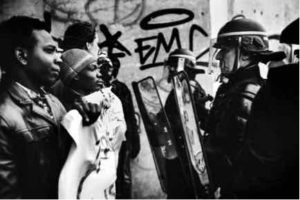 Mediterranean, the French state razed a portion of Calais’s “jungle,” encampments that currently shelter 10,000 refugees, while building a container camp. In this essay, an analysis of recent film and photography highlights practices of resistance to the interplay of humanitarian compassion and securitarian repression, nuancing the view of borderscapes as sites of total biopolitical capture, and of refugees as bare life.
Mediterranean, the French state razed a portion of Calais’s “jungle,” encampments that currently shelter 10,000 refugees, while building a container camp. In this essay, an analysis of recent film and photography highlights practices of resistance to the interplay of humanitarian compassion and securitarian repression, nuancing the view of borderscapes as sites of total biopolitical capture, and of refugees as bare life.  What do we require of these pages? Or, to anthropomorphize and so shift the emphasis: what do they require of us? Such questions are at once theoretical and methodological, and the potential answers are so varied that reducing them to any binary between x or y way of proceeding would clearly be insufficient. Nonetheless, at present one pair of options stands out among others: should we interpret or should we describe? Is our task as readers, viewers, critics, scholars, and theorists the interpretive one of assigning or discerning meaning, crafting a reading, making the object of our attention speak its hidden truth? Or is it, on the contrary, the descriptive one of limning all the details, redoubling the object in our commentary on it, refusing the obviousness of the obvious by exhaustively accounting for what is to be read or seen?
What do we require of these pages? Or, to anthropomorphize and so shift the emphasis: what do they require of us? Such questions are at once theoretical and methodological, and the potential answers are so varied that reducing them to any binary between x or y way of proceeding would clearly be insufficient. Nonetheless, at present one pair of options stands out among others: should we interpret or should we describe? Is our task as readers, viewers, critics, scholars, and theorists the interpretive one of assigning or discerning meaning, crafting a reading, making the object of our attention speak its hidden truth? Or is it, on the contrary, the descriptive one of limning all the details, redoubling the object in our commentary on it, refusing the obviousness of the obvious by exhaustively accounting for what is to be read or seen?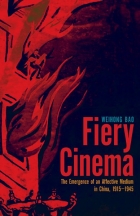
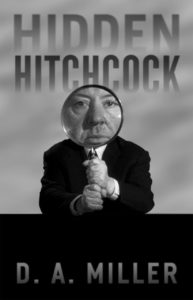 Hidden Hitchcock, D. A. Miller does what seems impossible: he discovers what has remained unseen in Hitchcock’s movies, a secret style that imbues his films with a radical duplicity.
Hidden Hitchcock, D. A. Miller does what seems impossible: he discovers what has remained unseen in Hitchcock’s movies, a secret style that imbues his films with a radical duplicity.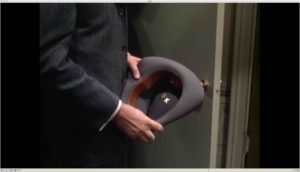
 GEORGINA KLEEGE
GEORGINA KLEEGE